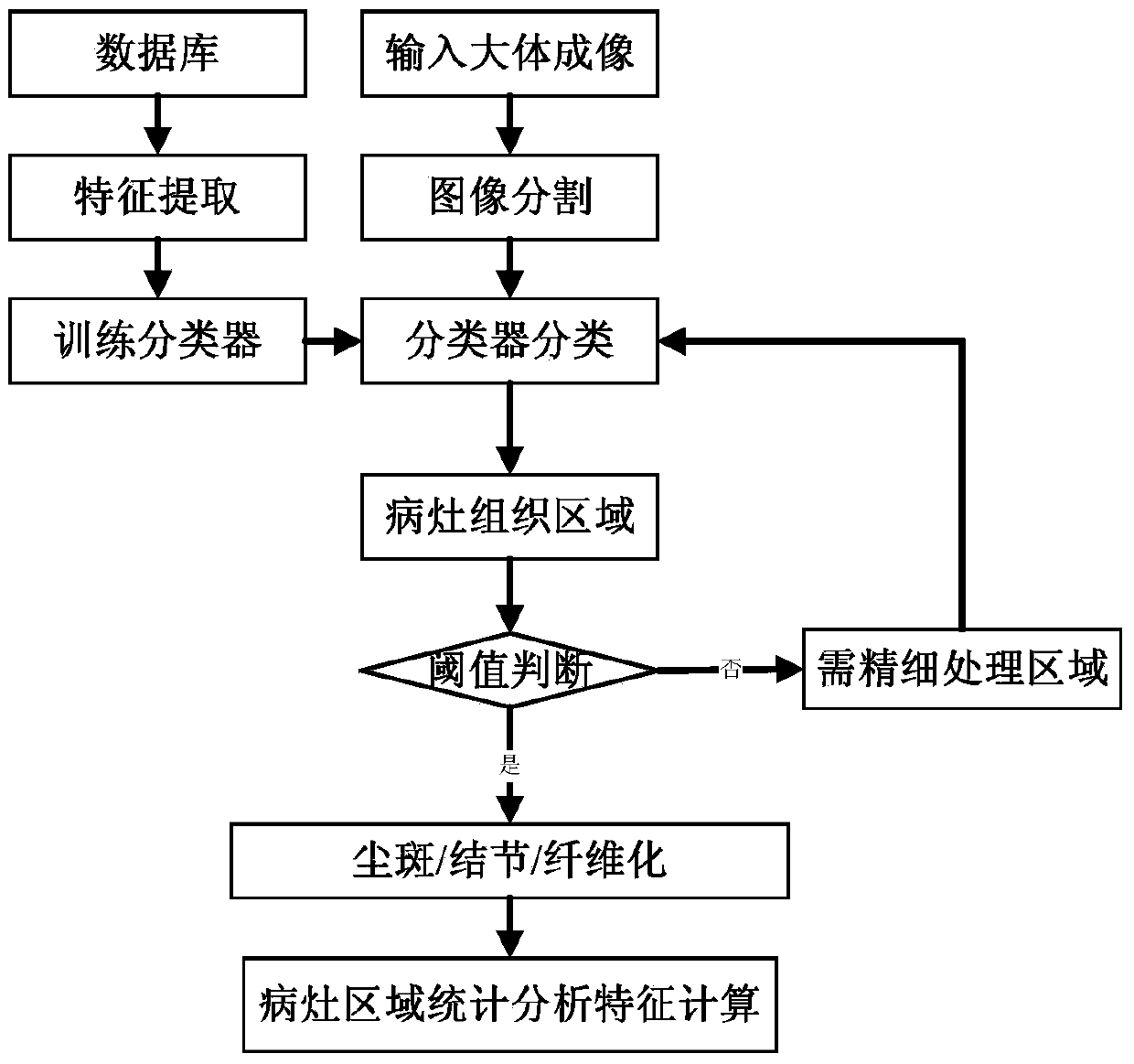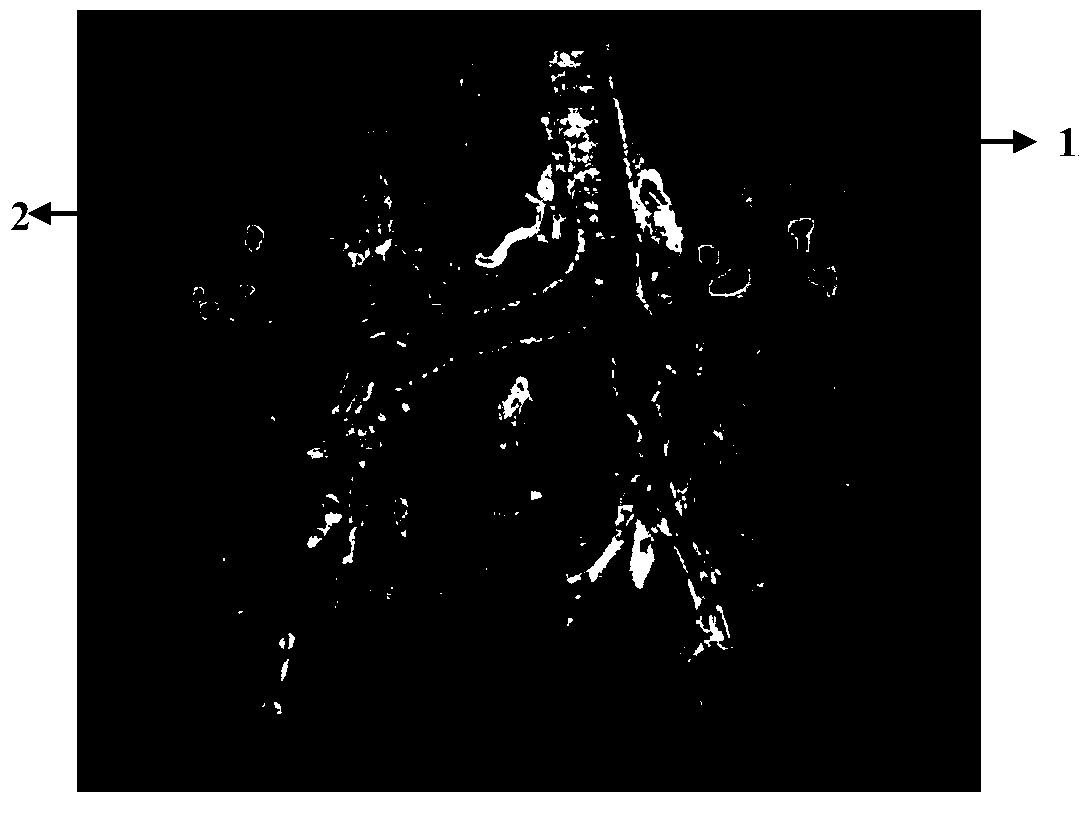Method for extracting and analyzing nidus areas in pneumoconiosis gross imaging
An analysis method, pneumoconiosis technology, applied in the direction of instruments, character and pattern recognition, computer components, etc., can solve the problems of cumbersome operation, low efficiency, large measurement error, etc., and achieve the effect of high efficiency
- Summary
- Abstract
- Description
- Claims
- Application Information
AI Technical Summary
Problems solved by technology
Method used
Image
Examples
Embodiment 1
[0033] The extraction and analysis method of the lesion area in the pneumoconiosis gross imaging, the steps are as follows:
[0034] S1. Extract features:
[0035] S11. connect the pneumoconiosis gross imaging database with the computer,
[0036] S12. Calculate the center coordinates (c x ,c y ), taking the center of the region as the starting point, draw 36 rays evenly every 10°, and intersect with the corresponding points on the boundary of the region respectively to obtain 36 line segments, divide each line segment into 5 equal parts, divide each line segment into The bisection points of each are connected respectively, and the area is divided into 5 ring parts, and the average gray value of each ring part is calculated to form a 5-dimensional feature vector, and the difference operation is performed on the 5-dimensional feature vector to obtain a 4-dimensional feature vector, and the 5-dimensional feature vector is obtained The dimensional feature vector and the 4-dimen...
Embodiment 2
[0065] The extraction and analysis method of the lesion area in the pneumoconiosis gross imaging, the steps are as follows:
[0066] S1. Extract features:
[0067] S11. connect the pneumoconiosis gross imaging database with the computer,
[0068] S12. Calculate the center coordinates (c x ,c y ), taking the center of the region as the starting point, draw 36 rays evenly every 10°, and intersect with the corresponding points on the boundary of the region respectively to obtain 36 line segments, divide each line segment into 5 equal parts, divide each line segment into The bisection points of each are connected respectively, and the area is divided into 5 ring parts, and the average gray value of each ring part is calculated to form a 5-dimensional feature vector, and the difference operation is performed on the 5-dimensional feature vector to obtain a 4-dimensional feature vector, and the 5-dimensional feature vector is obtained The dimensional feature vector and the 4-dimen...
PUM
 Login to View More
Login to View More Abstract
Description
Claims
Application Information
 Login to View More
Login to View More - R&D
- Intellectual Property
- Life Sciences
- Materials
- Tech Scout
- Unparalleled Data Quality
- Higher Quality Content
- 60% Fewer Hallucinations
Browse by: Latest US Patents, China's latest patents, Technical Efficacy Thesaurus, Application Domain, Technology Topic, Popular Technical Reports.
© 2025 PatSnap. All rights reserved.Legal|Privacy policy|Modern Slavery Act Transparency Statement|Sitemap|About US| Contact US: help@patsnap.com



